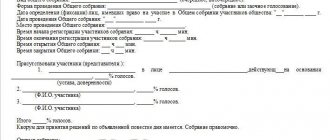Under a loan agreement, one party (the lender) transfers into the ownership of the other party (borrower) money or other things determined by generic characteristics, and the borrower undertakes to return to the lender the same amount of money (loan amount) or an equal number of other things received by him of the same kind and quality (Clause 1 of Article 807 of the Civil Code of the Russian Federation). The loan agreement is a real contract, that is, it is considered concluded from the moment of transfer of money or other things.
A loan agreement can be concluded by both legal entities and individuals; if the agreement is concluded between individuals, then the mandatory written form must be observed when the loan amount is from 1000 rubles, when concluding an agreement with the participation of a legal entity - the lender - always, regardless of the amount (clause 1 Article 808 of the Civil Code of the Russian Federation).
The loan agreement may be interest-bearing or interest-free.
The contract is always interest-bearing, unless otherwise specified in the contract itself. The opposite rule applies in cases where an agreement is concluded between citizens for an amount not exceeding 5,000 rubles and is not related to the entrepreneurial activity of at least one of the parties, and also when under the agreement the borrower is not given money, but other things determined by generic characteristics - in these cases, the loan agreement is considered interest-free, unless otherwise provided in the agreement itself. Please note that if the agreement does not contain conditions on the amount of interest, their amount is determined by the existing bank interest rate at the lender’s place of residence, and if the lender is a legal entity, at its location the bank interest rate (as of February 10, 2014, the refinancing rate is 8. 25 percent per annum Directive of the Bank of Russia dated September 13, 2012 N 2873-y) on the day the borrower pays the debt amount or its corresponding part (clause 1 of Article 809 of the Civil Code of the Russian Federation).
Funds under a loan agreement can be transferred both in cash and using non-cash payments. When making cash payments, it is necessary to take into account that in accordance with paragraph 1 of the Central Bank of Russia instructions dated June 20, 2007 N 1843-U, cash settlements in the Russian Federation between legal entities, as well as between a legal entity and a citizen carrying out business activities without forming a legal entity , between individual entrepreneurs related to their business activities, within the framework of one agreement concluded between these persons, can be made in an amount not exceeding 100,000 rubles.
RECEIPT FOR RECEIPT OF LOAN AMOUNT: SAMPLE
Important! There are no restrictions on cash payments involving citizens not related to their business activities. Legal entities and individuals who are not individual entrepreneurs can make such payments among themselves in Russian currency without restrictions.
When issuing and repaying loans and borrowings, cash register equipment is not used and cash receipts are not required (Letter of the Ministry of Finance of Russia dated February 21, 2008 N 03-11-05/40).
It should also be noted that neither legal entities nor individual entrepreneurs have the right to spend cash received in their cash registers for goods sold, work performed or services provided (CBR Letter No. 190-T dated December 4, 2007). Therefore, if an organization decides to provide a cash loan, then it must first deposit the cash proceeds to the bank, and then withdraw the required amount from the account and issue the money under the loan agreement (letter of the Central Bank of the Russian Federation dated August 3, 2009 N 14-27/292).
Gratuitous transfer of funds covered by a gratuitous loan agreement
When transferring funds under a loan agreement, whether paid or gratuitous, it is important to understand that this operation must be repayable. Otherwise, it is difficult to disagree with the tax authorities that such a transaction is a gratuitous transfer of property, subject to income for the receiving party.
...The funds received under an interest-free loan agreement were recognized as gratuitously received property, since the taxpayer did not provide any documentary evidence of the existence of borrowed legal relations, and therefore these amounts were subject to inclusion in non-operating income. (Resolution of the Arbitration Court of the Ural District dated February 13, 2019 in case No. A07-30518/2017).
It should be noted that in cases where the tax authority believes that the relationship under the loan agreement is of a formal nature, and therefore the loan agreement covers a gratuitous transfer of property, the facts of the remuneration of the agreement and the return of funds by the time the dispute is considered may play a key role.
Thus, in case No. A76-24391/2018, the court agreed with the taxpayer about the illegality of additional income tax charges on the amount of funds received under the loan agreement. As the court pointed out, it followed from the terms of the agreement that the loan was interest-bearing, and therefore it cannot be recognized as a gratuitous transfer of property.
The documents on the basis of which the loan is issued are:
- loan agreement;
- payment order to transfer the loan amount to the borrower, if the loan was issued from a current account;
- cash documents if the loan was issued in cash.
The receipt of interest, as well as the return of the loan amount, to the current account is reflected on the basis of bank statements for the current account and copies of payment orders with which the borrower transferred the amount of interest to the organization's account and repaid the loan.
If the borrower pays the amount of interest and also returns the loan in cash to the organization’s cash desk, then these actions are formalized in accordance with the rules for conducting cash transactions.
Previously, when issuing funds from the cash register, the cashier had to issue a cash receipt order in Form N KO-2. Documents for the issuance of money must be signed by the manager, chief accountant of the enterprise or persons authorized to do so (clause 4.2 of Regulations N 373-P). An expense cash order must be reflected in the cash book (Form N KO-4) (clause 5.2. Regulations N 373-P), as well as in the journal for registering receipt and expense orders (Form N KO-3). But from January 1, 2013 The forms of primary accounting documents contained in the albums of unified forms of primary accounting documentation are not mandatory for use. Therefore, the organization can develop all the necessary forms for work independently, the main thing is that they meet the requirements established by Article 9 of the Federal Law of December 6, 2011. N 402-FZ “On Accounting”. However, in our opinion, these document forms are very convenient to use, so we consider it advisable to recommend them for use at the present time.
Funds transferred to the borrower under the loan agreement, as well as those returned by the borrower, are not recognized in the lender’s accounting as expenses and income of the organization (clause 2 of PBU 10/99 “Expenses of the organization”, clause 3 of PBU “Income of the organization”) and are taken into account as financial investments (interest-bearing only) (clause 3 of PBU 19/02 “Accounting for financial investments”).
Accounting for an interest-free loan
An interest-free loan is not a financial investment for an organization, since one of the conditions for recognizing an asset as a financial investment is not met, namely the ability of the asset to bring economic benefits (income) to the lending organization in the future. An organization can take into account the issued loan as a financial investment, provided that it receives interest on it. In accordance with the Chart of Accounts for accounting the financial and economic activities of organizations and the Instructions for its application, approved by Order of the Ministry of Finance of Russia dated October 31, 2000 N 94n, the amounts of cash and other loans provided by the organization to individuals who are not employees of the organization should be reflected in account 76 " Settlements with various debtors and creditors”, sub-account “Settlements for loans granted”.
Errors when accounting for amounts under gratuitous loan agreements
There are many cases in which there was a simple mistake by the taxpayer, which led to non-payment of tax. There are many such errors when issuing interest-free loans to individuals by organizations that must withhold personal income tax as a tax agent on material benefits on interest for the use of borrowed funds (Resolution of the Arbitration Court of the Far Eastern District dated October 9, 2019 in case No. A04-3940/2018; Resolution of the Arbitration Court Volga District dated February 28, 2020 in case No. A65-10597/2019).
However, there are also isolated cases with exceptional errors, when it is not entirely clear whether the taxpayer made a mistake or whether he was counting on the inattention of the inspectors.
For example, in case No. A57-4930/2019, the courts came to the conclusion that it was unjustified for the company to reduce the income portion by the amount of returned advances, believing that the advance payments returned by the company are not a return under a supply agreement, but are a return of an interest-free loan under another agreement, which is confirmed letters with the counterparty, interrogation protocol, coincidence of the amounts returned under the supply agreement and under the loan agreement.
Simply put, the taxpayer formalized the return of funds under the loan agreement as a return of the advance payment under the supply agreement, reducing the amount of taxable income. The tax authority noticed the error.
Whether the taxpayer intended to avoid paying taxes, or whether a simple mistake was made, history is silent.
As another case of a tax accounting error, we can cite case No. A63-2828/2018, in which the taxpayer did not write off accounts payable under an interest-free loan agreement issued by a person that was liquidated at the time of the audit.
During the audit, the tax authority came to the conclusion that in this case the taxpayer has non-operating income on which it is necessary to pay income tax.
The accounting will look like this:
| Debit 76 | Credit 50 (51) | reflects the issuance of a loan to an individual from the organization's current account |
| Debit 50 (51) | Credit 76 | the loan repayment is reflected in accordance with the terms of the agreement |
If a loan is issued to an employee of an organization, then instead of account 76 “Settlements with various debtors and creditors”, account 73 “Settlements with personnel for other operations” is used, subaccount 73-1 “Settlements for loans provided”.
Personal income tax
When determining the tax base for personal income tax, all income of the taxpayer received by him, both in cash and in kind, or the right to dispose of which he has acquired, as well as income in the form of material benefits are taken into account (clause 1 of Article 210 of the Tax Code of the Russian Federation). When receiving an interest-free loan, the taxpayer’s income is the material benefit from savings on interest for the use of borrowed funds received from organizations (clause 1, clause 1, article 212 of the Tax Code of the Russian Federation). Let us recall that when receiving income in the form of a material benefit, the tax base is defined as the excess of the amount of interest for the use of borrowed (credit) funds, expressed in rubles, calculated on the basis of 2/3 of the current refinancing rate established by the Central Bank of the Russian Federation on the date of actual receipt of income by the taxpayer, over the amount interest calculated based on the terms of the agreement, and the date of actual receipt of income in the form of material benefit is the day the taxpayer pays interest on the borrowed (credit) funds received. The Ministry of Finance of Russia explained (Letters of the Ministry of Finance of the Russian Federation dated September 23, 2011 N 03-04-06/6-236, dated July 25, 2011 N 03-04-05/6-531), that if an organization issued an interest-free loan, then the actual date of receipt income in the form of material benefits should be considered the corresponding dates of actual repayment of borrowed funds.
AUDIT ON SPECIAL TASK
Important!
Thus, in the situation under consideration, during the period (periods) of repayment of borrowed funds, the individual borrower receives income subject to personal income tax in the form of material benefits from savings on interest for the use of borrowed funds.
Material benefits from savings on interest for using an interest-free loan received by an individual who is a tax resident of the Russian Federation is subject to personal income tax at a rate of 35% (Clause 2 of Article 224 of the Tax Code of the Russian Federation, Letter of the Ministry of Finance of Russia dated October 8, 2010 N 03-04 -06/6-247). In this situation, the lender organization is recognized as a tax agent in the situation under consideration. Consequently, she should calculate, withhold from the taxpayer and pay to the budget the amount of calculated personal income tax on the amounts of income in the form of material benefits.
Borrower – individual
If the borrower is not a company, but an individual (for example, an employee of the lending organization), then he may have income in the form of material benefits from savings on interest, subject to personal income tax. Why can it? Yes, because it all depends on the purpose for which the loan is issued. If a loan is issued for the purchase (construction) of housing or land, then provided that the tax inspectorate confirms the right of the citizen-borrower to use the property tax deduction, the material benefit is exempt from taxation (paragraph 5, paragraph 1, paragraph 1, Article 212 of the Tax Code of the Russian Federation ).
Since when issuing an interest-free loan to a citizen, personal income tax is paid by the lending organization as a tax agent, it is to it that the “physician” must provide the appropriate confirmation. A document confirming the right to a property tax deduction may be:
- notification in the form approved by order of the Federal Tax Service of Russia dated January 14, 2015 No. ММВ-7-11/3, issued by the tax office for submission to the employer (tax agent);
- a certificate in the form given in letter No. BS-4-11/329 dated January 15, 2016, which can be issued by the tax office for presentation to other tax agents (other than employers).
In this case, the document must contain details of the loan agreement, on the basis of which the funds spent on the purchase of real estate, in respect of which a property deduction was provided, were provided. In the absence of relevant details, such a document cannot be the basis for tax exemption. This conclusion was made, in particular, in the letter of the Ministry of Finance of the Russian Federation dated September 21, 2016 No. 03-04-07/55231. It also states that a one-time submission of a supporting document is sufficient, that is, it is not necessary to submit a notification (certificate) annually in order to be exempt from personal income tax in subsequent years when repaying the issued loan.
But if the supporting document is issued not to the borrower directly, but to the spouse, then the exemption from personal income tax can no longer be applied. Officials from the Federal Tax Service of Russia drew attention to this in their letter dated June 23, 2016 No. BS-4-11/1120.
Now let’s talk about how to determine income in the form of material benefits from saving on interest. Since 2016, such income is determined on the last day of each month in which the loan (credit) agreement was valid, regardless of the date of receipt of such a loan (clause 7, clause 1, article 223 of the Tax Code of the Russian Federation). The income itself is calculated based on 2/3 of the Bank of Russia refinancing rate established on the date of receipt of income (clause 1, clause 2, article 212 of the Tax Code of the Russian Federation). In this case, personal income tax is calculated at a rate of 35 percent (clause 2 of Article 224 of the Tax Code of the Russian Federation).
If the borrower has cash income from which tax can be withheld (for example, salary), then no questions arise. If there is no such income, for example, if the loan was issued to a citizen who is not an employee, then there is no way to withhold tax. This means that the lender is limited to submitting a message to the Federal Tax Service about the impossibility of withholding tax. The message is submitted in the form of a 2-NDFL certificate indicating code “2” in the “Sign” field. In this case, the procedure for filling out a certificate with attribute “2” is similar to the procedure for filling out a certificate with attribute “1”. However, in section 3 “Income taxed at the rate of __%” you need to indicate only those incomes from which tax was not withheld.
Accounting for interest-bearing loans
To summarize information about loans provided by the organization to individuals (except for employees of the organization), account 58 “Financial investments”, sub-account “Loans provided” is intended (the procedure must be fixed in the accounting policy of the organization).+
TAX AUDIT
Important!
Interest on the loan must be recognized in income on a monthly basis; in accounting, interest is accrued for each expired reporting period in accordance with the terms of the agreement. For accounting purposes, the reporting period is considered to be a month (PBU 4/99 “Accounting statements of an organization”).
If a loan is provided to an employee, then the amount of accrued interest is reflected in the debit of account 73 in correspondence with the credit of account 91 “Other income and expenses”, subaccount “Other income”.
If the loan is granted to an individual who is not an employee of the lending organization, then the amount of accrued interest is reflected in the debit of account 76 “Settlements with various debtors and creditors” in correspondence with the credit of account 91, subaccount “Other income”.
Personal income tax
When concluding an interest-bearing loan agreement, an individual borrower becomes obligated to pay tax only if the interest rate is lower than 2/3 of the refinancing rate established by the Central Bank of the Russian Federation. Moreover, the organization is a tax agent and is obliged to calculate, withhold and pay tax to the budget.
Whenever an individual borrower pays interest, the organization must check whether he received a material benefit (interest savings). If received, the organization is obliged to calculate its amount, calculate personal income tax from it and transfer it to the budget. If it is not possible to withhold and pay the tax (the borrower does not receive any cash payments from the organization), the tax authorities must be informed about this (clause 5 of Article 226 of the Tax Code of the Russian Federation).
Income tax
If the terms of the agreement provide for the payment of interest for the employee’s use of funds, then income in the form of interest is subject to inclusion in the tax base for income tax as non-operating income.
For the purpose of calculating profit tax, non-operating income of an organization is income in the form of interest received under loan agreements, credit agreements, bank accounts, bank deposits, as well as on securities and other debt obligations (clause 6 of Article 250 of the Tax Code of the Russian Federation).
AUDIT OF FINANCIAL STATEMENTS
Important!
The procedure for recognizing income using the accrual method is regulated by clause 1 of Art. 271 of the Tax Code of the Russian Federation, according to which income is recognized in the reporting (tax) period in which it occurred, regardless of the actual receipt of funds, other property (work, services) and (or) property rights (accrual method).
Under loan agreements and other similar agreements, the validity of which falls on more than one reporting period, income is recognized as received and is included in the said income at the end of the corresponding reporting period (clause 6 of Article 271 of the Tax Code of the Russian Federation).
Thus, a taxpayer who determines income using the accrual method determines the amount of income received or to be received in the reporting period in the form of interest in accordance with the terms of the agreement, based on the yield established for each type of debt obligation and the validity period of such debt obligation in the reporting period .
In conclusion, we will say that if the activity of providing loans to individuals is the main activity for the organization, then the income received and the expenses incurred will be income and expenses from ordinary activities.
How are loans taken into account when calculating taxes?
If the loan is issued with interest, then the overpayment on it is considered income of the organization and is taxed. Companies on OSNO must take it into account when calculating income tax. The rate will be 20%. If you use the simplified tax system, then include the amount of interest in the tax base.
Loan transactions should be reflected in accounting as follows:
- Debit 73 credit 50 – loan issue
- Debit 73 credit 91.1 – interest accrual
- Debit 50 credit 73 – debt repayment (interest is indicated separately)
A separate condition is provided for loans with an interest rate of less than two-thirds of the refinancing rate, as well as interest-free ones. Upon receipt, the borrower must pay income tax at a rate of 35%. The tax agent here is the lending company - it will withhold personal income tax from a person’s salary or dividends. For this reason, such loans may be unprofitable - the personal income tax rate is higher than the income tax rate.
If the loan is recognized as bad or has been forgiven, then the company is obliged to pay personal income tax on its amount at a rate of 13%, regardless of interest.




